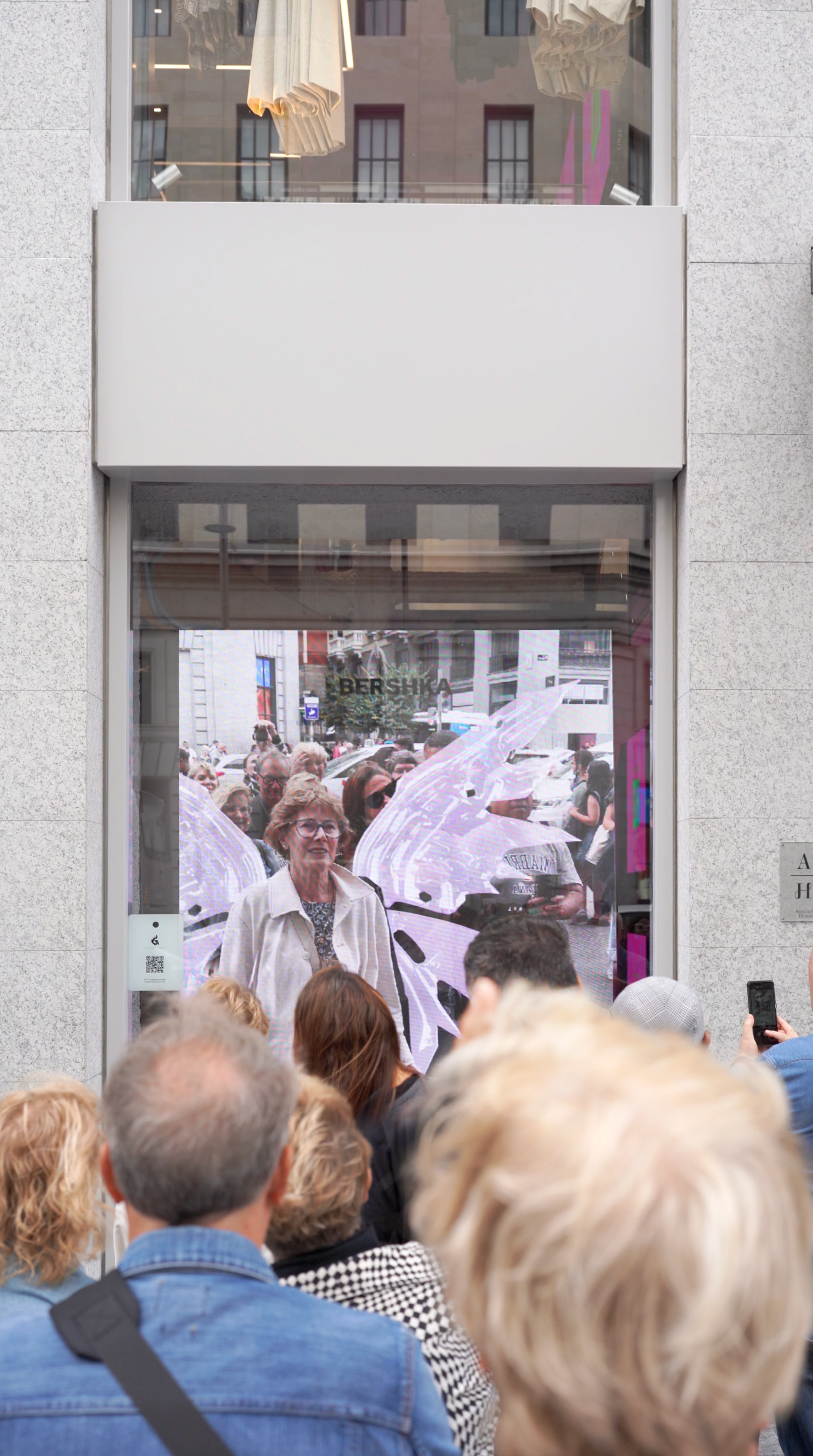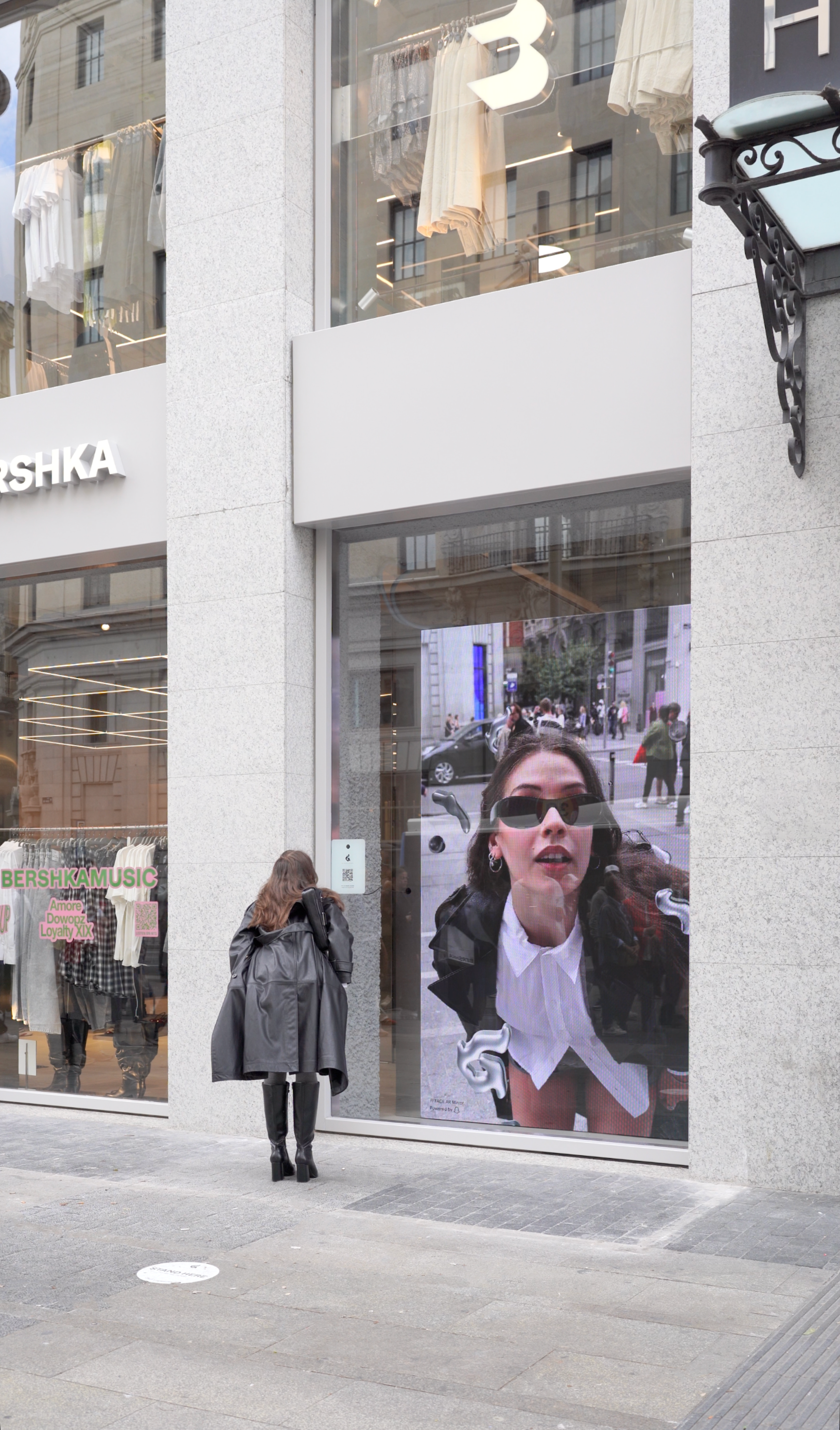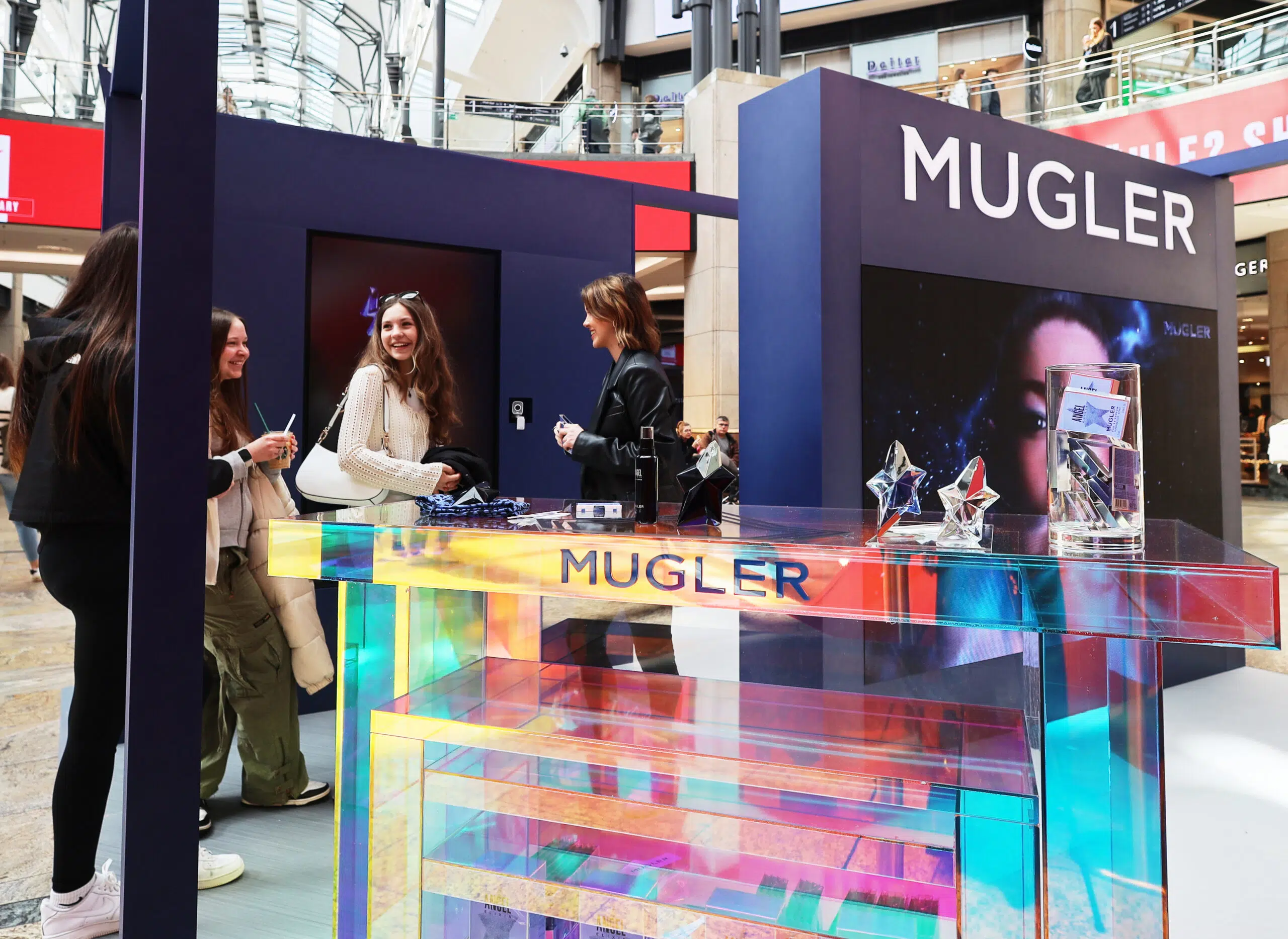In today’s rapidly evolving retail landscape, understanding how customers interact with physical spaces is more critical than ever. Foot traffic analysis offers retailers a data-driven approach to optimizing store performance, enhancing customer experiences, and driving revenue. With the advent of advanced technologies like Artificial Intelligence (AI) and Augmented Reality (AR), the potential for gaining deeper insights has expanded dramatically.
What is Retail Foot Traffic Analysis?
Foot traffic refers to the number of people entering or passing through a store or location. Foot traffic analysis involves collecting and interpreting this data to uncover customer behavior patterns, assess store performance, and measure the impact of marketing campaigns.
Retail Foot Traffic Statistics and Trends
In 2024, U.S. retail foot traffic grew by a modest but meaningful 0.4% year-over-year, demonstrating resilience amid shifting conditions. While severe weather impacted January and calendar shifts influenced other months, most periods outperformed 2023. Maine and North Dakota led regional growth, driven by population shifts and the rise of large-format retailers. The data highlights how strategic positioning, value-driven offers, and local factors shaped foot traffic patterns this year. (Source: Placer.ai)
Kiehl’s AR Mirror activation led to a 20% surge in foot traffic — turning heads and drawing crowds with interactive beauty tech. Explore more >
Types of Foot Traffic Data
Foot traffic insights fall into two categories: quantitative (numerical) and qualitative (behavioral/contextual). Demographic attributes also play a key role.
Quantitative Foot Traffic Data
Quantitative data refers to numerical information that can be measured and analyzed statistically. In the context of foot traffic, this includes:
- Visitor Counts: The total number of individuals entering a location within a specific timeframe.
- Dwell Time: The average duration visitors spend at a particular location.
- Peak Visit Times: Identification of the busiest periods during the day or week.
- Visit Frequency: How often individuals return to the location over a given period.
Collected via sensors, cameras, and mobile device tracking, this data reveals patterns and store performance benchmarks.
Qualitative Foot Traffic Data
Qualitative data encompasses non-numerical information that offers deeper insights into the reasons behind observed behaviors. In foot traffic analysis, this might involve:
- Customer Feedback: Opinions and experiences shared by visitors regarding the location.
- Observational Insights: Notes on how visitors interact with the space, such as navigation patterns or areas of interest.
- Motivations and Preferences: Understanding why individuals choose to visit and what factors influence their behavior.
Gathered through surveys, interviews, or observation, qualitative data explains the reasons behind behavior.
Demographic Data
Demographic data, which encompasses attributes such as age, gender, income, education level, and ethnicity, can be both quantitative and qualitative, depending on the nature of the specific variable:
- Quantitative Demographic Data: These variables are numerical and can be measured or counted. Examples include:
- Age: Typically expressed as a number representing years.
- Income: Often represented as a specific monetary value.
- Qualitative Demographic Data: These variables describe categorical attributes that cannot be measured numerically but can be categorized. Examples include:
- Gender: Categories like male, female, non-binary, etc.
- Marital Status: Categories such as single, married, divorced, widowed.
- Ethnicity: Categories representing different ethnic groups.
This information segments audiences and enriches behavioral insights.
| Data Type | Description | Examples |
|---|---|---|
| Quantitative Foot Traffic | Measurable visitor data | Visitor counts, dwell time, visit frequency |
| Qualitative Foot Traffic | Non-numerical insights into visitor behavior | Customer feedback, motivations, preferences |
| Demographic | Measurable or categorical attributes | Age, gender, income, marital status, ethnicity |
Methods for Collecting Foot Traffic Data
Several techniques are employed to gather foot traffic information:
- Anonymous Mobile Device Tracking: Utilizing anonymized data from mobile devices offers insights into customer movements and behaviors without compromising personal privacy.
- Video Camera Systems: Installing cameras to monitor and analyze customer movements provides real-time data on foot traffic patterns.
- Artificial Intelligence (AI) and Facial Recognition: AI-powered systems can analyze video feeds to track customer movements and demographics, enhancing the depth of foot traffic analysis.
- Wi-Fi and Bluetooth Analytics: Detecting signals from customers’ devices helps estimate the number of visitors and their dwell times within the store.
- Infrared Sensors and People Counters: Devices like infrared beams or pressure-sensitive mats count individuals entering or exiting a store, providing simple yet effective data collection.
Implementing Foot Traffic Monitoring
Implementing an effective foot traffic monitoring system requires careful planning and consideration of several key factors. First, businesses must select appropriate technology solutions that match their specific needs, taking into account factors like store size, budget constraints, and the type of data they wish to collect. This might involve choosing between various tracking methods such as cameras, sensors, or mobile device tracking systems.
Data privacy is another crucial consideration in the implementation process. Retailers must ensure compliance with relevant privacy regulations by implementing proper data anonymization procedures and maintaining transparency with customers about their data collection practices. This includes clear communication about what data is being collected and how it will be used.
Success in foot traffic monitoring also depends on proper data integration and analysis. Retailers should combine foot traffic metrics with other business data, such as sales figures and customer feedback, to create a comprehensive view of store performance. Regular analysis of this integrated data helps identify important trends and patterns, enabling retailers to make informed decisions about store operations, layout modifications, and marketing strategies. Through this systematic approach, businesses can effectively leverage foot traffic data to enhance customer experience and optimize store performance.
Insights Businesses Gain from Foot Traffic Analysis
Foot traffic analysis is a powerful tool that provides actionable insights into how customers engage with physical retail environments. By studying visitor movement, behavior, and patterns, businesses can make more strategic decisions to increase engagement, optimize resources, and drive sales. Here’s what retailers can learn:
Understanding Customer Behavior in Real Time
Foot traffic analysis gives retailers an inside look at how people interact with their physical space—from how they enter, to where they go, and how long they stay. One of the biggest advantages is the ability to identify customer behavior patterns. Retailers can track when their stores are busiest, how long people linger in certain areas, and which paths they most commonly take. This kind of insight helps businesses fine-tune their store layout, improve product placement, and make the overall shopping experience more intuitive and enjoyable.
Measuring the Impact of Marketing Campaigns
It also sheds light on how effective marketing efforts really are. By comparing foot traffic before, during, and after campaigns or promotions, brands can clearly see what drives people through the door—and what doesn’t. Even things like how often customers return can be measured, offering clues into brand loyalty and the lasting impact of a promotion or event.
Discover more: Geomarketing Guide: Capturing the Entire Offline Retail Market
Optimizing Store Layout and Merchandising
Another key benefit is the ability to continuously optimize the in-store experience. By observing where people naturally spend time versus areas they tend to skip, businesses can rethink their merchandising strategy. If certain zones consistently draw attention, they’re perfect spots for new product launches or seasonal promotions. Meanwhile, underperforming areas may need better signage, lighting, or even a redesign to attract more interest.
Diving into Point of Interest (POI) Behavior
Point of Interest (POI) analysis adds another layer of intelligence. By zooming in on specific areas—like fitting rooms, checkout counters, or particular product zones—retailers can see what captures attention and what might cause bottlenecks or disengagement. Even outside the store, POI data reveals which nearby attractions—like a coffee shop, bus stop, or gym—are feeding traffic into the store. This helps brands understand what external factors influence in-store visits and how to capitalize on those connections.
Aligning Staffing with Actual Demand
From an operational standpoint, analyzing foot traffic helps streamline staffing decisions. Knowing exactly when customers are likely to come in allows managers to schedule the right number of employees at the right times. This not only cuts labor costs but also ensures customers always have the support they need during peak hours.
Benchmarking Performance Against Competitors
Foot traffic data is also incredibly useful for competitive analysis. Retailers can benchmark their performance against nearby businesses or even across regions to understand where they stand. If a competitor consistently attracts more visitors, it might highlight areas where the business needs to step up—whether that’s in branding, product selection, or customer experience.
Choosing the Right Locations
Finally, this kind of analysis plays a major role in site selection. Choosing a new store location based on actual traffic patterns and surrounding demographics is far more reliable than relying on instinct or outdated trends. Businesses can identify high-potential locations where their target audience is already active, reducing risk and increasing the likelihood of success.
Analyzing Foot Traffic Data: A Step-by-Step Approach
Analyzing foot traffic is more than just collecting numbers—it’s about turning visitor movement into actionable insight. By following a clear, structured approach, retailers can transform raw data into strategies that improve customer experience, operational efficiency, and sales performance.
Step 1: Collect the Data
The first step is gathering accurate and comprehensive foot traffic data from multiple sources. Businesses can use infrared sensors, smart cameras, Wi-Fi and Bluetooth tracking, mobile device data, and even manual counters to track how many people enter, how long they stay, and where they go. For richer insight, it’s often best to combine different technologies. For example, video analytics can capture movement patterns, while mobile data may reveal visit frequency or cross-visitation trends with other nearby stores or points of interest. The more complete your dataset, the more valuable your analysis will be.
Step 2: Clean and Process
Once the data is collected, it needs to be cleaned and organized before analysis begins. This includes filtering out anomalies like duplicate counts, test runs, or environmental interferences (like a door swinging open repeatedly with no visitor). It also means unifying data formats if multiple technologies or locations are being compared. Consistent and reliable data is essential to ensure the insights you uncover are accurate and actionable.
Step 3: Analyze the Patterns
With the data ready, the next step is to analyze it for patterns and trends. AI-powered tools can be incredibly useful at this stage, helping identify correlations, predict peak hours, and flag unusual visitor behavior. For instance, machine learning models might spot a sudden drop in foot traffic linked to local events, construction, or competitor activity. You can also compare visitor flows across different times, days, or campaigns to evaluate how customer behavior changes and what drives it. This is the stage where raw numbers start to reveal stories.
Step 4: Visualize the Insights
Data is only as useful as it is understandable. That’s why visualization is so important. Creating dashboards, heatmaps, and interactive reports helps teams see where traffic is highest, where visitors tend to drop off, and how patterns evolve over time. Visual tools make it easier to communicate insights across departments—whether you’re briefing store managers, marketing teams, or executives—ensuring everyone can make informed decisions based on real-world movement.
Step 5: Act on What You Learn
The final step is putting insights into action. Whether it’s reorganizing a store layout to guide shoppers toward key displays, adjusting staff schedules based on traffic flow, or launching a promotion to increase mid-week visits, the goal is to apply what the data tells you. And once changes are made, it’s important to continue monitoring the results. Did dwell time increase? Did conversions go up? This feedback loop creates a culture of data-driven decision-making and ongoing optimization.
The Role of AI and AR in Foot Traffic Analysis
As physical retail spaces evolve, technologies like Artificial Intelligence (AI) and Augmented Reality (AR) are redefining how businesses understand and influence customer movement. These tools don’t just enhance the shopping experience—they also provide retailers with incredibly rich insights into how people interact with their environments, ultimately helping drive smarter decisions and more meaningful engagement.
Artificial Intelligence (AI): Real-Time Intelligence and Predictive Power
AI plays a crucial role in transforming raw foot traffic data into deep behavioral insights. Using technologies like computer vision, AI-powered video analytics can detect and analyze how customers navigate a store in real time. It tracks metrics like how long shoppers linger in a certain aisle, which displays attract the most attention, and what paths customers take from entry to checkout.
Beyond real-time monitoring, AI also enables predictive analytics. By analyzing historical data and current trends, AI tools can forecast busy periods, anticipate customer needs, and even help plan staffing and inventory with incredible accuracy. For example, if the system predicts a 30% spike in weekend foot traffic due to a local event, retailers can adjust staffing and promotions accordingly. This predictive capability allows businesses to stay agile and proactive, instead of reactive.
Machine learning also uncovers patterns that aren’t immediately obvious to human analysts—like identifying factors that cause traffic to dip unexpectedly or recognizing long-term shifts in shopping behavior. These insights make AI an essential tool for strategic planning and in-the-moment decision-making.
AR Mirrors: Personalized, Immersive In-Store Experiences
AR mirrors—also called smart or virtual mirrors—are redefining in-store engagement, especially in fashion and beauty retail. These devices use AR and AI to let customers virtually try on clothing, accessories, or makeup without ever stepping into a fitting room or using physical testers. Not only does this streamline the shopping experience, but it also adds a layer of fun, personalization, and convenience.
What makes AR mirrors especially powerful from a data perspective is their ability to track interactions. Retailers can see which products customers try on most, how long they spend experimenting with certain items, and whether virtual try-ons translate into sales. Some AR mirrors go even further, using facial analysis and customer profiles to suggest personalized product recommendations, increasing both basket size and customer satisfaction.
This interactive technology not only delights customers but also increases dwell time and store traffic. Shoppers are more likely to enter a store that offers a novel and engaging experience, especially if it’s something they can share on social media.
AR Storefronts: Drawing in Passersby with Next-Level Window Displays
Outside the store, AR storefronts are revolutionizing traditional window displays. Instead of static signage, passersby can engage with digital content through their smartphones—no app required. From animated product showcases and virtual models to mini-games and QR codes offering discounts, AR storefronts transform everyday foot traffic into high-value engagement opportunities.
This technology works around the clock. Even when a store is closed, AR storefronts continue attracting attention and building interest. They’re especially effective in high-footfall areas, like malls or city centers, where eye-catching experiences can turn casual browsers into curious visitors.
AR storefront interactions can also be tracked, helping retailers measure how many people engage with the display, what content captures the most interest, and how many virtual interactions lead to physical visits or purchases. It’s a seamless blend of digital engagement and physical conversion.
Together, AI and AR technologies are transforming foot traffic analysis from a basic headcount into a dynamic, intelligent system. Retailers that embrace these tools aren’t just keeping up—they’re creating immersive experiences, building smarter operations, and setting a new standard for what modern retail can be.


Strategies to Increase Retail Foot Traffic with AR Mirrors and Storefronts
As consumer expectations shift toward more interactive and personalized in-store experiences, AR (Augmented Reality) technologies—specifically AR mirrors and AR storefronts—are becoming powerful tools to attract and engage foot traffic. These innovations bridge the gap between the digital and physical worlds, creating excitement, convenience, and curiosity that drives people into brick-and-mortar locations.
- Offer Virtual Try-On Experiences with AR Mirrors: Let customers try on clothes, makeup, glasses, or accessories in real time without physically touching the product. This fun, no-fuss experience encourages walk-ins, especially when promoted via social media, local ads, or influencers.
- Promote Shareable, Social-First Experiences: AR mirrors provide the perfect selfie moment. Encourage shoppers to share their virtual try-on looks on platforms like Instagram or TikTok, turning your store into a buzz-worthy destination.
- Gamify the Shopping Experience: Add interactive features to AR mirrors such as “spin-to-win” discounts, loyalty rewards, or AR-based scavenger hunts. These games make the visit fun, memorable, and worth repeating.
- Use AR Storefronts to Grab Attention from the Street: Turn your windows into interactive displays. Passersby can scan your storefront with their phones to view virtual models, unlock hidden content, or access exclusive offers—drawing them inside.
- Promote AR Experiences in Your Marketing: Highlight your AR features in email campaigns, social media posts, or digital ads. Use messages like “Try on our new collection virtually in-store!” to spark curiosity and drive in-person visits.
- Launch Limited-Time AR Campaigns: Tie AR mirrors and storefronts to seasonal promotions, product launches, or special events. A beauty brand, for example, could use AR to let shoppers try every shade in a new lipstick line—offering discounts for those who purchase on the spot.
- Collect Insights and Personalize the Journey: Use AR mirror data (anonymized) to see what products are tried on most. Then, personalize in-store experiences or follow up with targeted promotions to re-engage interested visitors.
- Create 24/7 Brand Engagement with AR Storefronts: AR storefronts work even when your store is closed. Use animated visuals, countdowns, or games to draw attention after hours and keep your location top-of-mind at all times.
Bring Your Store to Life with AR & AI—Powered by LOOOK AI
Ready to turn foot traffic into real results? With AR mirrors, immersive storefronts, and AI-powered analytics, LOOOK AI delivers turnkey solutions tailored to your retail goals. Create immersive customer experiences, optimize operations, and outperform competitors. Discover what’s possible.








